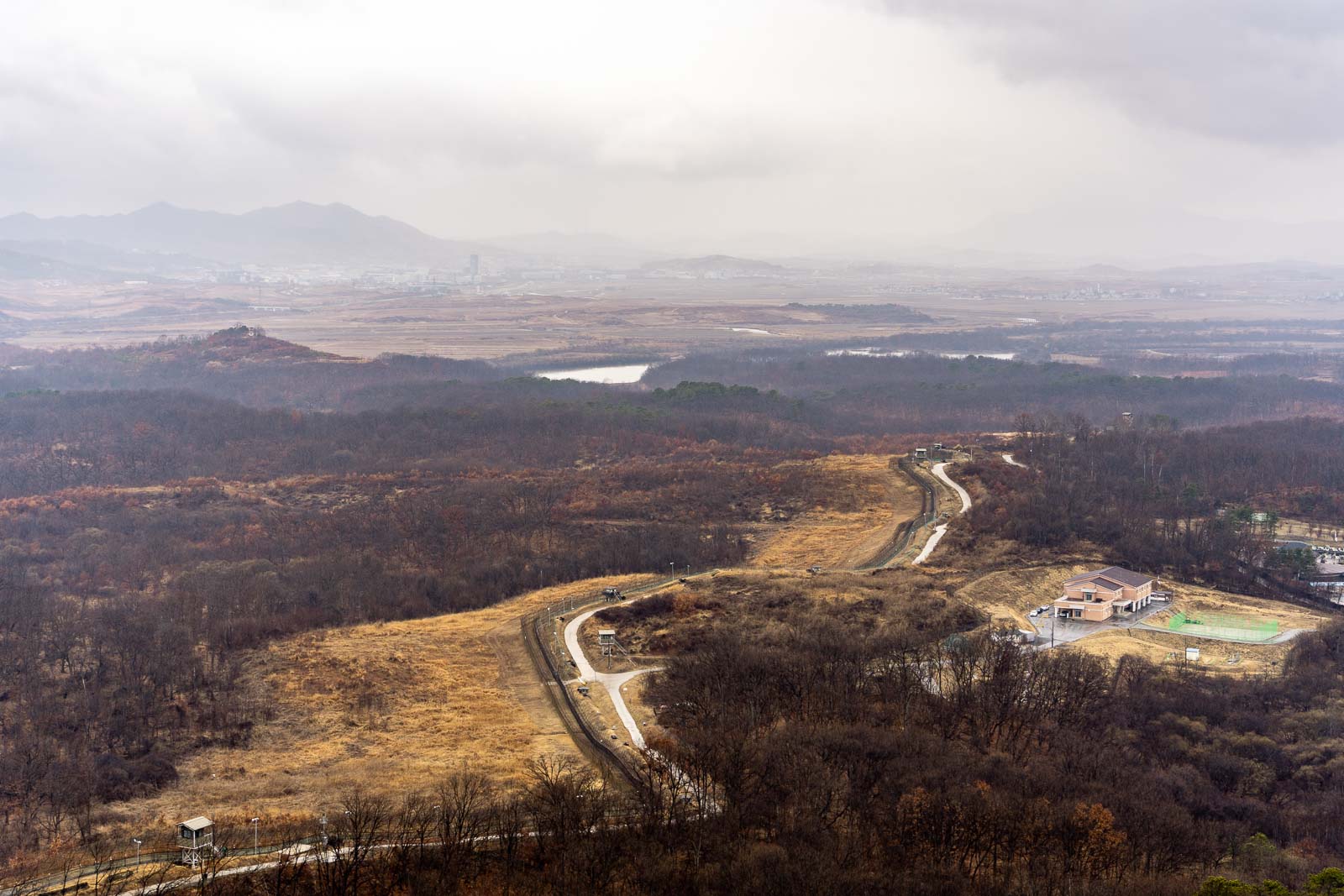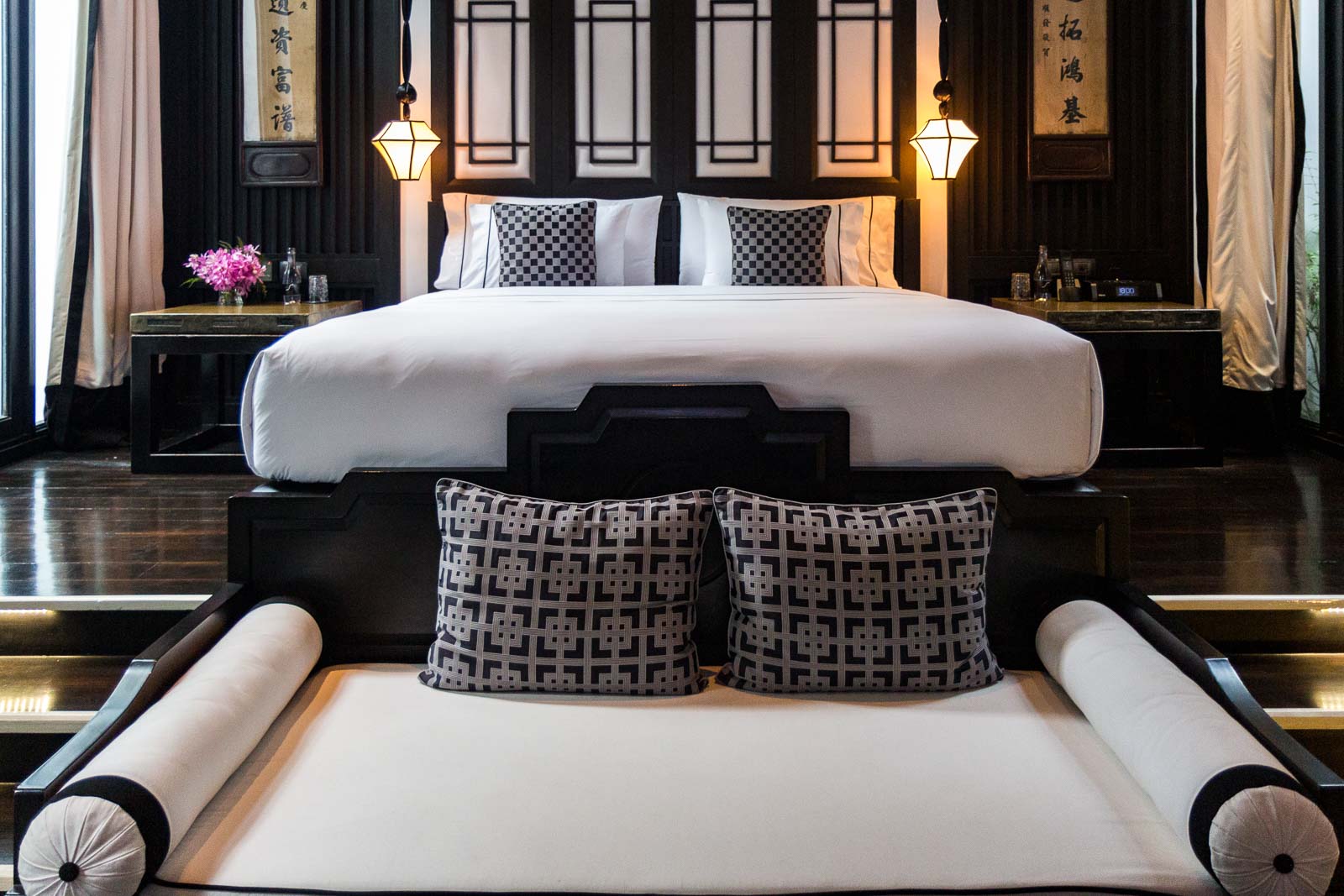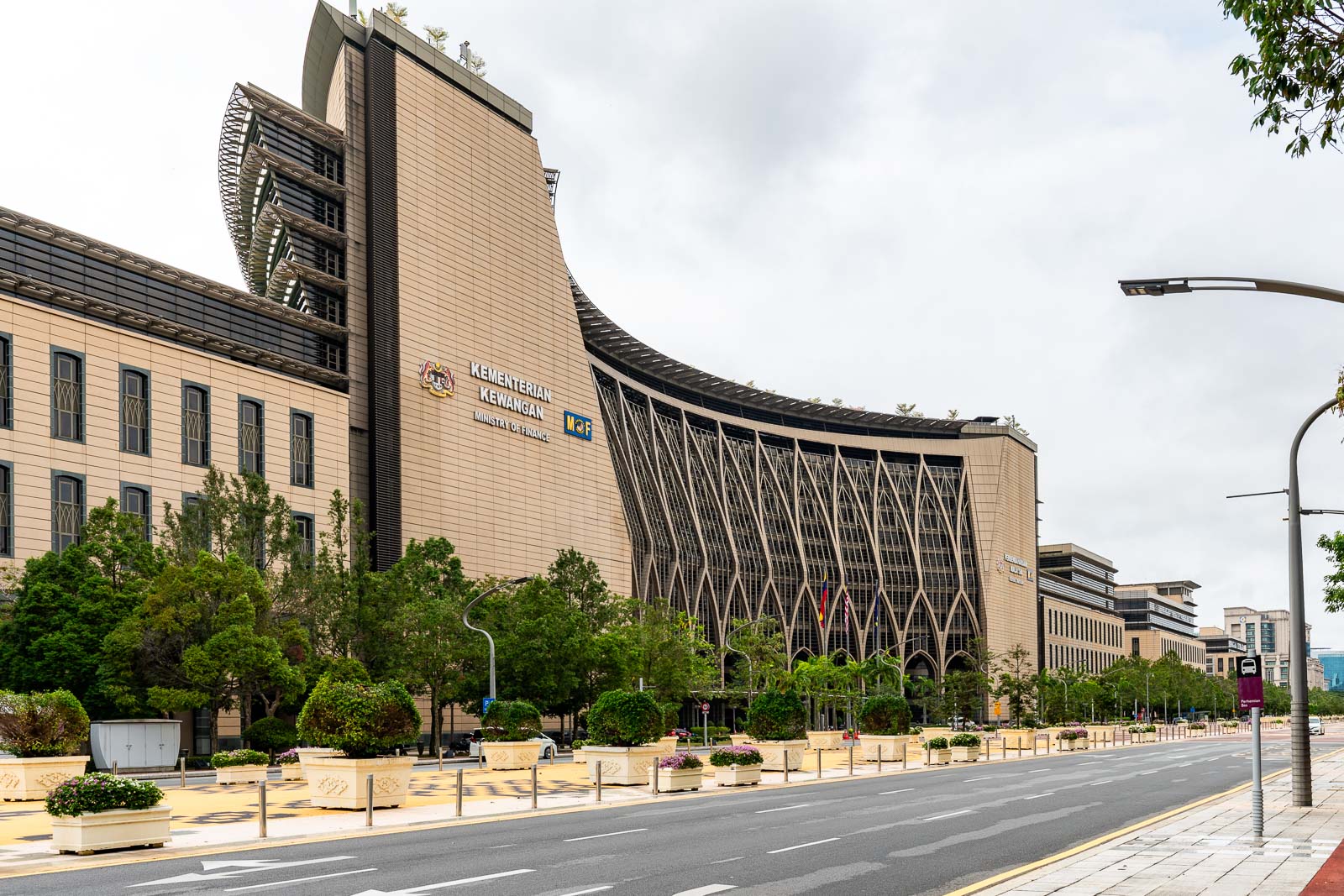Haeinsa Temple would be a significant site anyway, but the Tripitaka Koreana makes it even more special. The post Visit Haeinsa Temple appeared first on Time Travel Turtle.
Up in the mountains, far from its nearest city, is one of South Koreaís greatest cultural treasures.
Haeinsa Temple is where Iíve come to see it, but itís not the temple itself that is so special (although thereís a lot that is magnificent about it Ė more on that shortly).
Itís not even the old wooden buildings at the back that are the highlight, even though these structures are specifically included as one of the World Heritage Sites in South Korea.

No, itís what these wooden buildings are holding inside it that is such a treasure, one of the most culturally significant things in the whole country.
This is the Tripitaka Koreana, and itís the reason for my journey here into the isolated mountains.
Why is Haeinsa Temple so important?
Haeinsa Temple is one of the three main Buddhist temples in South Korea, and the head temple of the Jogye Order of Korean Seon Buddhism. But Haeinsa Temple is particularly significant as the location of the Buddhist scriptures known as the Tripitaka Koreana.
What is the Tripitaka Koreana?
The Tripitaka Koreana is a collection of more than 81,000 wooden blocks onto which a version of the Buddhist scripture called the Tripitaka has been carved in Korean characters. In total, there are more than 52 million characters on the blocks, which are stored in special buildings at Haeinsa Temple in South Korea.
Can you visit Haeinsa Temple?
Yes, Haeinsa Temple is open to visitors every day, who can explore the site for a small entrance fee. Itís possible to see the Tripitaka Koreana through the openings of the Janggyeong Panjeon buildings that hold it.
A journey to see the Tripitaka Koreana is spiritual for some. For all, the physical journey reflects that.
First up a long path through a forest, the rustling of leaves and the flow of the river creates a soundtrack to leave behind daily life and immerse yourself in the cleansing of nature.
Then, through the gates and into the main part of Haeinsa Temple, which rises up over several terraces.

In the courtyard of one terrace, I stop at a large pattern marked out on the ground in a square, about 20 metres on each side. Itís a maze, but with only one possible path from the entrance, youíll turn 54 times as you follow it.
I pick up a piece of paper at the start of the maze, written on it are affirmations and lessons to consider. I read it as I walk, the idea of the maze being that youíll master the content by the time you arrive back at the starting point.
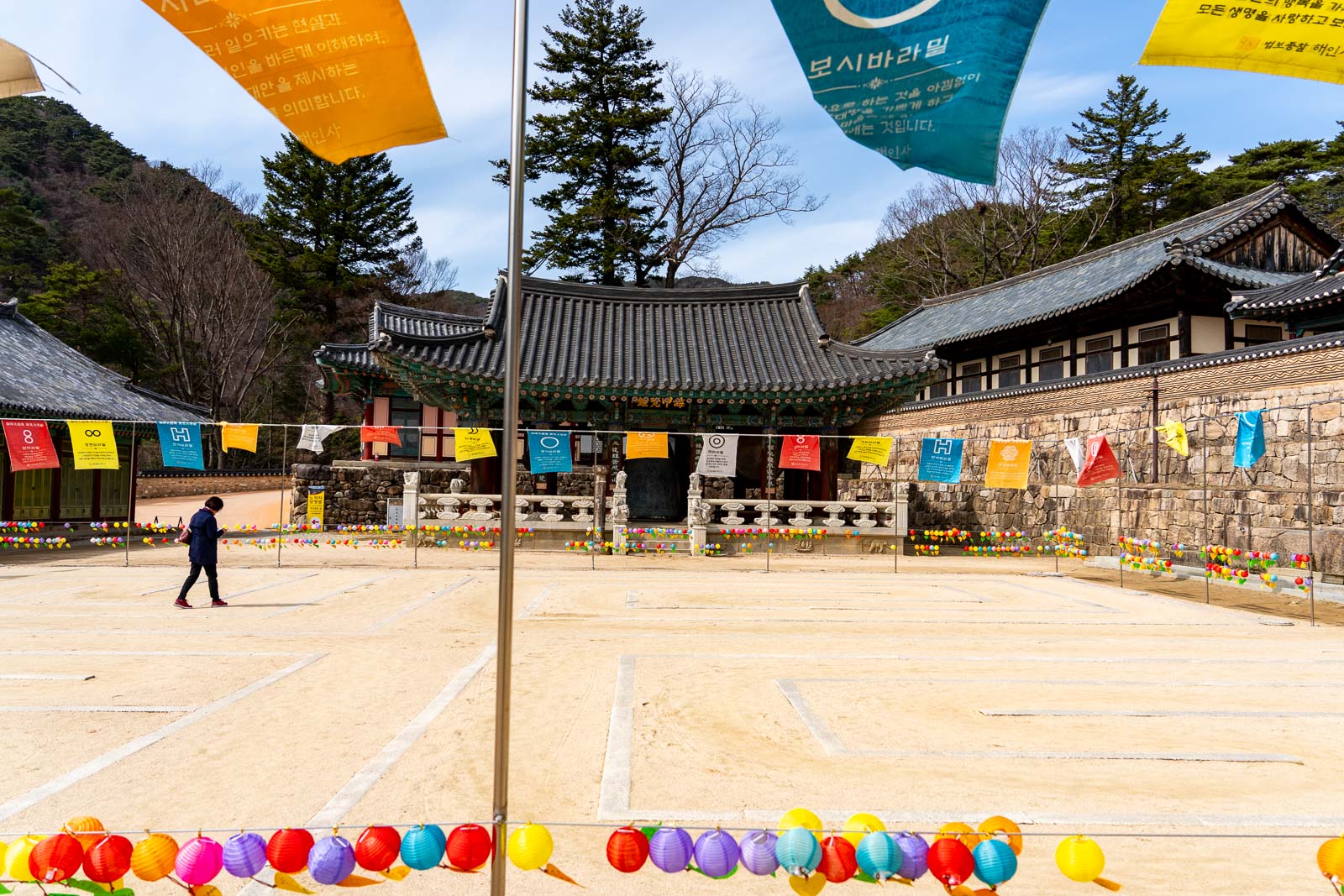
This maze is called Haeindo, and itís at the heart of the philosophy of Haeinsa Temple.
The word ĎHaeiní in the name of the temple is a Buddhist idea that means, just like a calm sea without waves will have a reflection, our mind will clearly reflect parts of the universe when it is calm.
Itís this philosophy, at the core of teachings of the temple, that is one of the main reasons Haeinsa Temple has been such an important pilgrimage site for centuries.

It is the head temple of the Jogye Order of Korean Seon Buddhism. And itís considered to be one of the Three Jewels Temples.
In other words, Haeinsa Temple is one of the three most important temples in South Korea.
Although there arenít many tours to Haeinsa Temple, it is included in this three-day trip to some of South Koreaís World Heritage Sites.
From the main part of Haeinsa Temple, youíll take the final ascent of your journey, to buildings that will only reveal themselves once you reach the top of the stairs.
These wooden structures are the Janggyeong Panjeon, in which the Tripitaka Koreana are housed.
Although the temple is significant enough and would be a pilgrimage destination even without it, this is what takes the site to a whole other level.
The story of the Tripitaka Koreana
To get a sense of what the Tripitaka Koreana is, itís first important to understand a bit about the Tripitaka more generally.
Although itís not really the same, one way to think of the Tripitaka is as a Buddhist version of the Bible or the Koran.
One of the main reasons itís different to the Bible or the Koran, though, is that itís actually just one of the Buddhist scriptures (although arguably one of the most important).
And perhaps the biggest difference is that the Tripitaka is not a singular book that is read as an authority. Itís a collection of lots of different texts that are often contradictory and, even as Buddha himself said, should be questioned by each person.
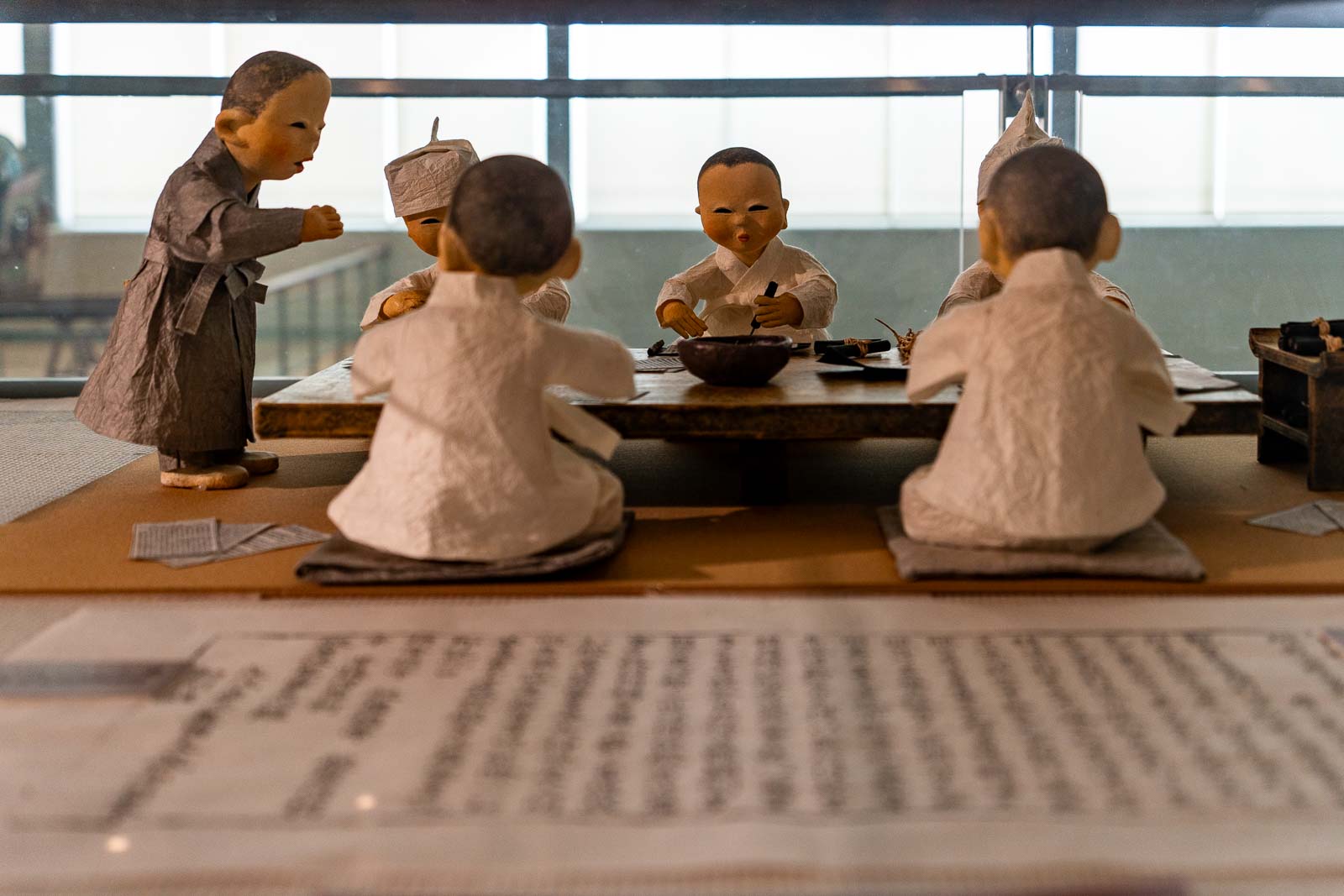
The name ĎTripitakaí literally translates as Ďthree basketsí because there are three categories of texts and early versions were written on palm-leaf manuscripts and then kept in baskets.
But at first, the Tripitaka was just oral, passed down through generations, so there are actually quite a few different Tripitakas around the world because they changed by the time they were written down by various groups.

Which brings as to the Korean version, known as the Tripitaka Koreana. It doesnít just contain those original three categories of texts, but also additional works specific to Buddhism here, like biographies of monks, dictionaries, and even some travel stories.
And, this version wasnít written down on palm-leaf manuscripts. It was carved into wood! And thatís so it could be used as printing blocks to make copies.
The Tripitaka Koreana at Haeinsa Temple
The Tripitaka Koreana at Haeinsa Temple is from the 13th century. It is written in Hanja, the Chinese characters traditionally used for the Korean language (the modern Korean script wasnít popularised until the 20th century).
So, each wooden block in the Tripitaka Koreana is 24 centimetres high and 70 centimetres wide. That makes enough space for 644 Hanja characters on each block.
To write down all the text in the Tripitaka Koreana, there are 81,258 wooden blocks.
That means there are a total of 52,330,152 characters!!
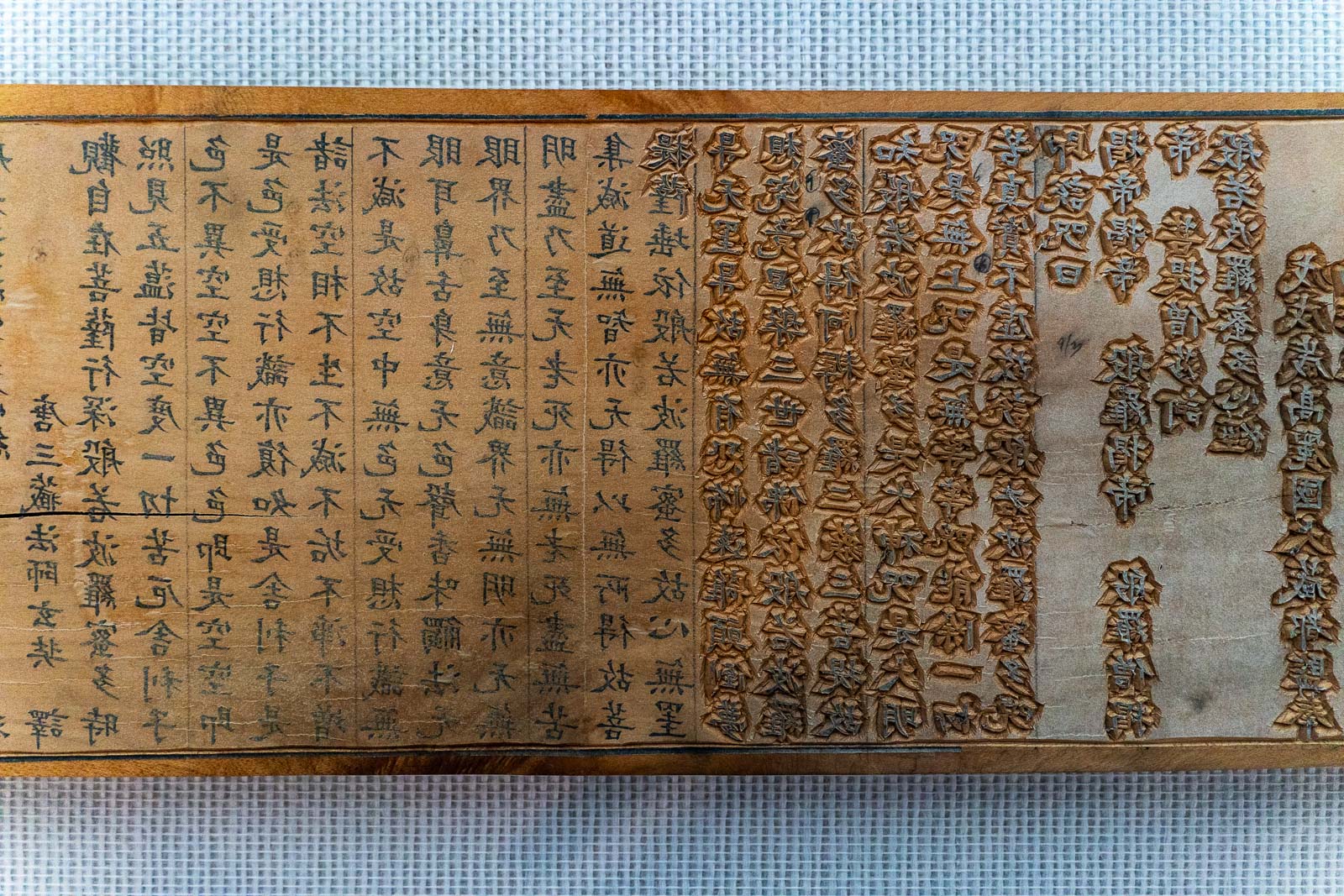
One of the things that makes the Tripitaka Koreana at Haeinsa Temple so special is that, although different people did the carvings, the work is so good that it looks like just one person did the whole thing.
Thatís especially impressive when you consider that it took 16 years to complete the engraving of all the blocks Ė from 1236 to 1251.
Perhaps you now understand why they had to build a whole new complex to house all of these blocks which, if lined up next to each other, would be 60 kilometres long!

Iíll tell you more about these buildings, called the Janggyeong Panjeon, in a moment. But I thought first I would run through the things to see at Haeinsa Temple in the order that youíll approach them on a visit (with the Janggyeong Panjeon coming right at the end).
Things to see at Haeinsa Temple
The first Haeinsa Temple was built here in 802, but has had several major renovations over the years.
It had to be rebuilt after a major fire in the 19th century, which means the version youíll see today is from 1818.
But itís always been set amongst lush forest, and the interaction between the manmade structures and the nature is an important aspect of your visit, and part of what youíll see at Haeinsa Temple.
Haeinsa Temple Seongbo Museum
Your visit to the temple will start at the road, where there are shops and cafes. Just a short stroll up the hill, the first place youíll reach is the Haeinsa Temple Seongbo Museum.
As well as special exhibitions, there is a permanent collection on display showing some important relics from the temple, including sculptures and an old bell.
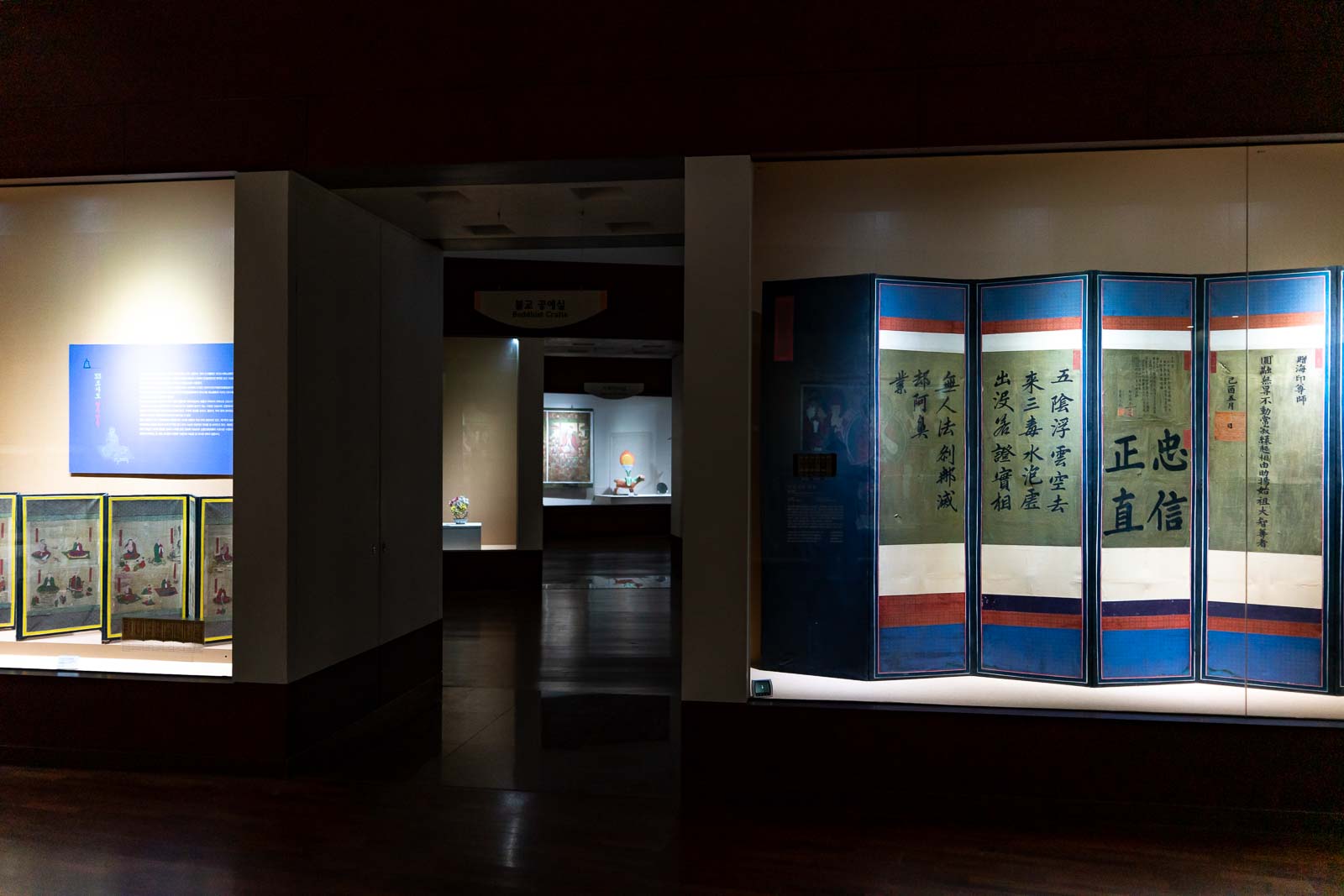
But I think the most interesting aspect here is some of the information about the Tripitaka Koreana and the way it was made and used for printing.
When you get to the buildings housing the wooden blocks, yu wonít be able to see the characters, so this is a good chance to get a sense of how the blocks actually look with the carvings.
Gayasan National Park
Haeinsa Temple is located within Gayasan National Park, which is dominated by the imposing Gaya Mountain, known as both a sacred and scenic location.
To reach the temple from the museum, youíll need to walk for about a kilometre along a path through the national park.

Rather than see this as an impost, I suggest enjoying the nature, taking the time to stop at the viewing areas beside the river and perhaps even taking some short detours on the tracks that go a bit deeper into the trees.
If youíre keen for a full day out, there are lots of great hiking trails through Gayasan National Park that you can add to your visit to Haeinsa Temple.
Temple entrance
Once you reach the entrance to Haeinsa Temple, youíll pass though several gates.
The first, called Iljumun Gate, is at the start of the path that youíll take to the outer wall. As you pass through it, youíre supposed to put down your anguishes like greed and anger.

Coming through the Phoenix Gate, youíll pass beyond the first wall and into the temple complex. The gate is dedicated to the Four Heavenly Kings who will forcefully rid you of your anguishes if you couldnít do it yourself at the earlier gate.
And then, up a short flight of stairs, youíll pass through the Haetalmun Gate to the lower terrace, signifying leaving the realm of rebirth and entering the realm of enlightenment.
Lower terrace
The courtyard of the lower terrace is the largest of the complex, and the floor is dominated by the Haeindo, the maze I talked about earlier than you can follow while reading the piece of paper found at its entrance.
Around the edge of the courtyard are several buildings used as shelters or for lessons.
To the left, the Beomjonggak is of note Ė this small pavilion has a bell that is rung to convey the grand sound of the Buddhist law as it echoes through the quiet mountain temple.
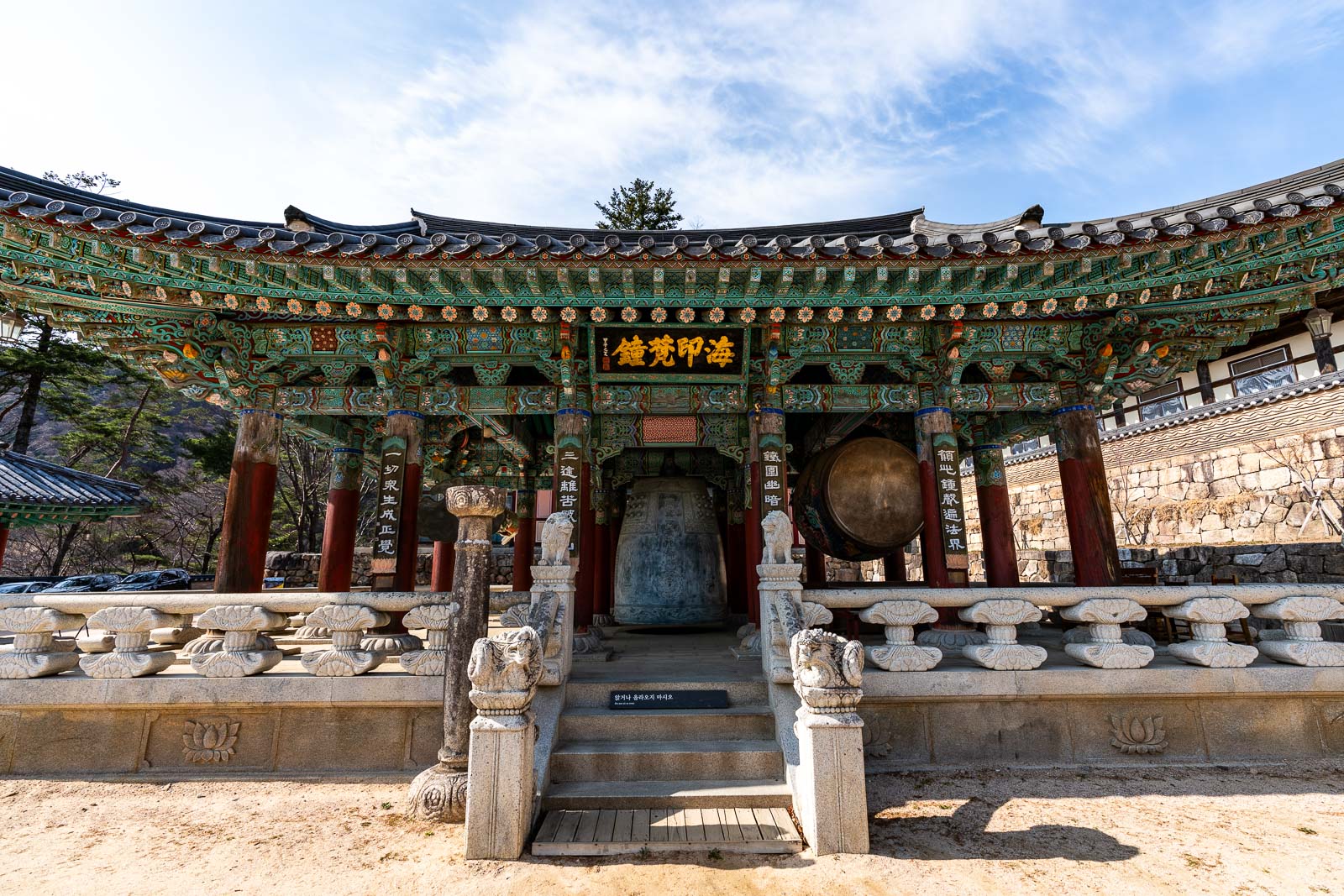
The largest building on this terrace is the Gugwangru Pavilion, at the front. Part of the pavilion is used as a shop and as a museum with some artefacts like scrolls and manuscripts.
Upper terrace
The upper terrace is the focal point of the main part of the temple, with the most important structures.
Straight ahead is the primary building, the Daejeokgwangjeon Hall, which is particularly interesting because it is dedicated to Vairocana (Virojana Buddha), unlike most Korean temples which honour ĎThe Buddhaí (Gautama Buddha).
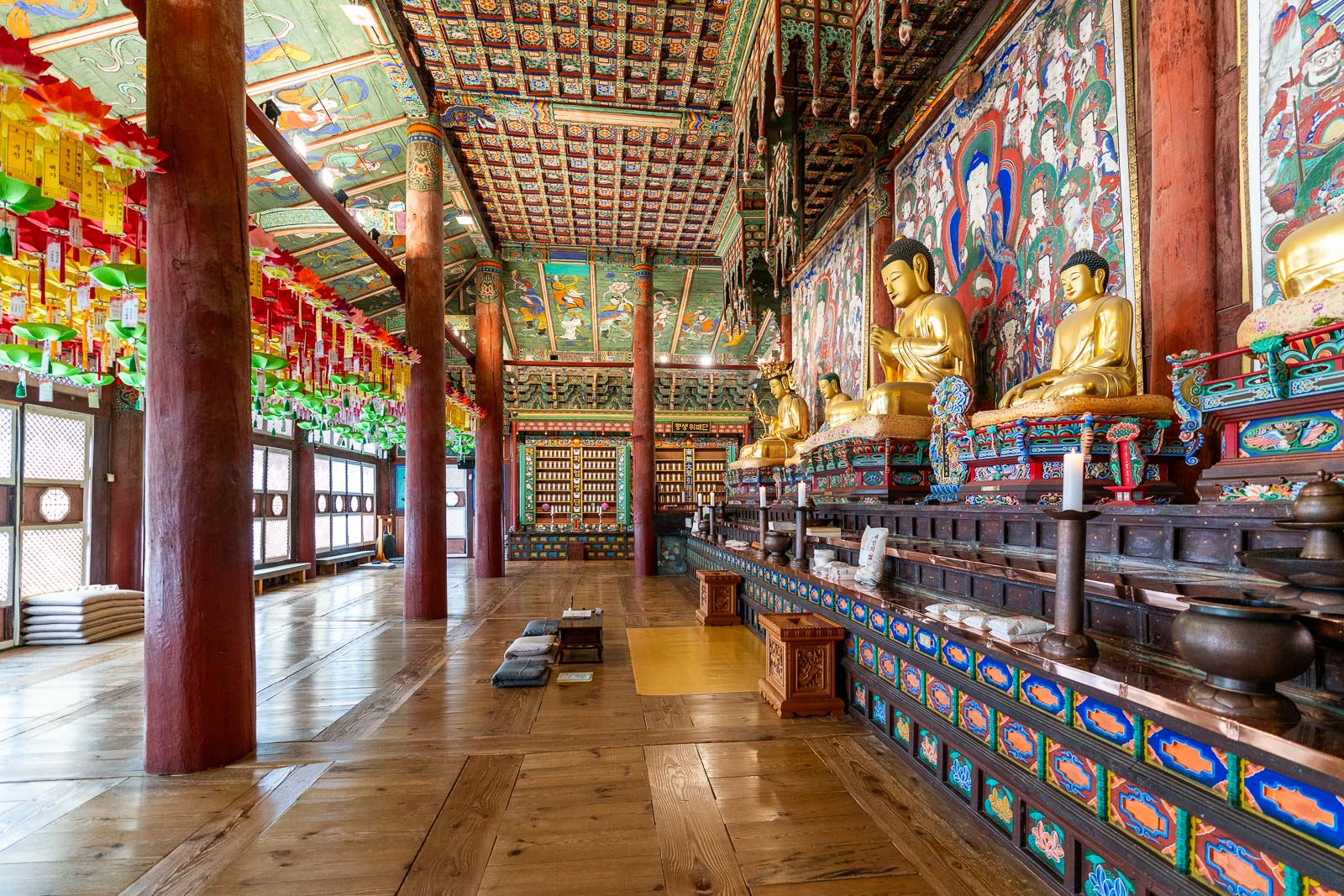
Also of note on the upper terrace is the three-story stone pagoda, which was erected when the temple was founded in the 9th century.
And there are three small halls Ė Daebirojeon, Eungjinjeon, and Myungbujeon Ė which each have shrines that are worth having a look at, as well as another one called Dokseonggak just over to the left, past the edge of the terrace.
Janggyeong Panjeon
From the back of the main Daejeokgwangjeon Hall, climb the steep set of stone stairs (or use the less steep path past the left side of the terrace) and go through the gate in the wall to reach Janggyeong Panjeon.
The complex holding the Tripitaka Koreana is made up of four buildings (two large and two small) arranged in a rectangular shape.

They are relatively plain looking buildings but are ingenious in their design, with slatted windows to allow wind to come through as part of the preservation of the wooden blocks, for example.
Youíll be able to walk around the outside of the buildings and look through these windows to see the Tripitaka Koreana on the shelves.
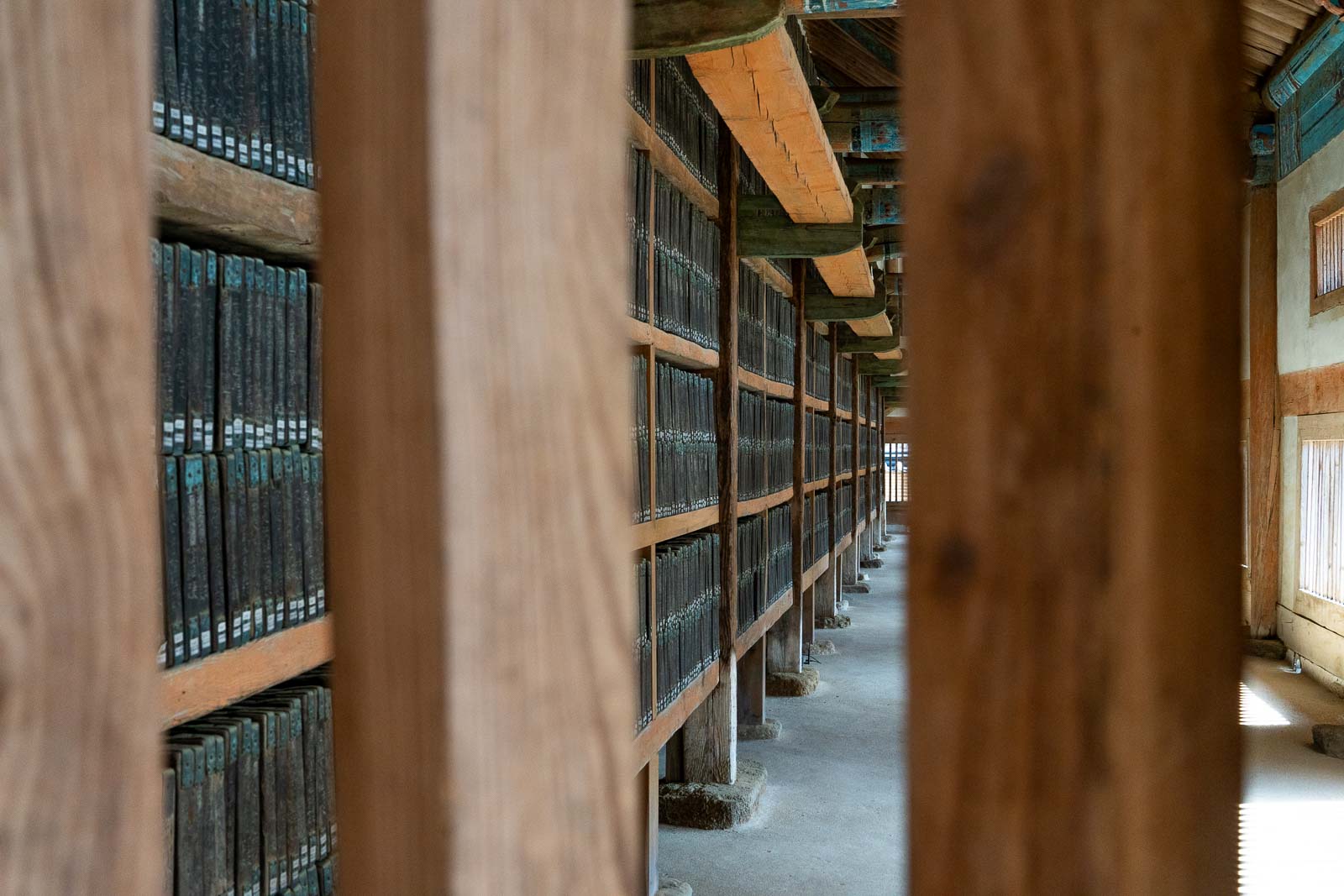
However, the only part visible of each block is its spine. The carved characters are hidden, like the covers of books in a library.
Visiting Haeinsa Temple
If youíre taking your time to travel around South Korea (especially if youíre doing it without a car), I recommend basing yourself in the city of Daegu for a visit to Haeinsa Temple.
Itís the easiest main city from which to access the temple, and there are enough interesting things to see in Daegu itself.
The trickiest thing about Haeinsa Temple is getting there, because itís not really close to many other tourist sites. But, with a bit of planning, itís fairly straightforward.

By car, itís about 1h 10m from Daegu, 1h 50m from Gyeongju, or 2h 20m from Busan. The drive is easy enough, although the roads get a little winding towards the end.
By public transport, the best way to get to Haeinsa Temple is by bus, which leaves from Daegu and goes via Goryeong. The bus takes about 1h 30m and there are about 14 each day, so you normally donít have to wait too long if you miss one.
Once you arrive, youíll need to walk along the path from the main street to the temple, which is about a kilometre long and up a gradual incline.
I recommend spending a minimum of about 90 minutes at Haeinsa Temple. Including the walking through the park, you could probably spend even longer. Itís not somewhere you really want to rush.
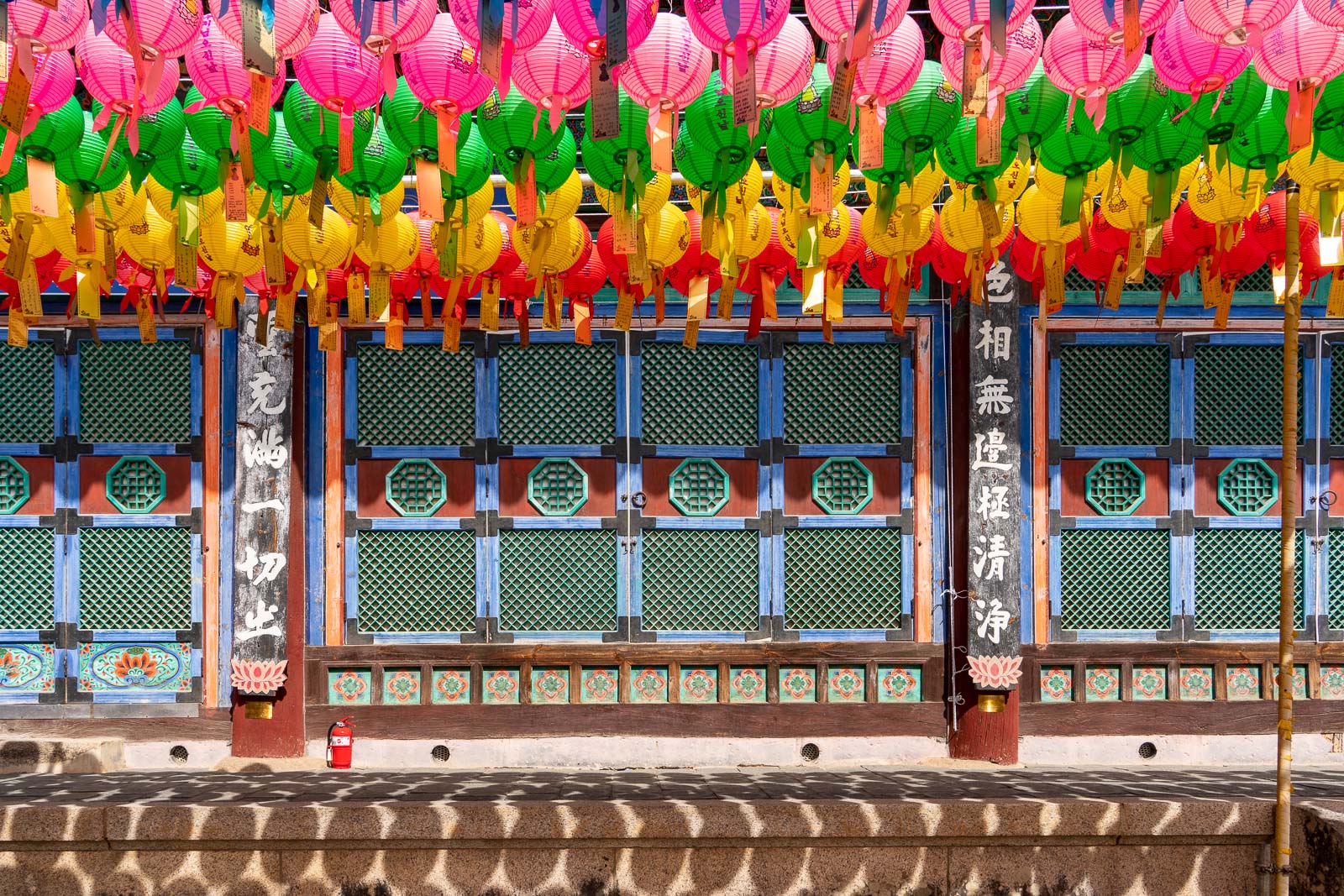
Although the highlight is the Janggyeong Panjeon and its Tripitaka Koreana, the rest of the temple is also lovely, with good information signs explaining what youíre seeing.
If you feel like making it a day trip, there are also delightful hiking trails through the national park.
There are several cafes between the main street (bus stop and car park) and the temple entrance, where you can get good value food and drink.
Where is Haeinsa Temple?
Haeinsa Temple is in the mountains towards the south of the country, about 90 kilometres east of Jeonju and 45 kilometres west of Daegu.
The official address is 122 Haeinsa-gil, Gaya-myeon, Hapcheon-gun, Gyeongsangnam-do, South Korea.
You can see it on a map here.
How do you get to Haeinsa Temple?
By car, itís about 1h 10m from Daegu, 1h 50m from Gyeongju, or 2h 20m from Busan. There is parking at Haeinsa Temple, which costs 4000 won (US$3) per car.
By public transport, catch the bus to Haeinsa from the Seobu Intercity Bus Terminal in Daegu. The trip takes about 1h 30m. There are about 14 departures from Daegu throughout the day, starting at 6:40 and finishing at 20:00.
When is Haeinsa Temple open?
There are two different opening times for Haeinsa Temple, depending on the time of year.
In the summer season, itís open from 08:30 to 18:00.
In the winter season, itís open from 08:30 to 17:00.
What is the Haeinsa Temple entrance fee?
The entrance fee for Haeinsa Temple is:
Standard: 3000 won (US$2.30)
Student (aged 13 Ė 18): 1500 won (US$1.10)
Children (aged 7 Ė 12): 700 won (US$0.50)
The ticket sales are on the main street as you drive past the entrance to the temple site. If youíre coming by bus, someone will come onboard to sell you the ticket.
Are there tours to Haeinsa Temple?
There are no guided tours to Haeinsa Temple from any of the nearby cities, unfortunately. However, it is one of the destinations for this interesting three-day tour of South Korean World Heritage Sites.
With about three hours of travel time for the return journey, and up to two hours on site, visiting Haeinsa Temple will take up much of the day.
But if you start early in the day or plan your trip around afternoon buses, you may have time to do other things along the way.
Even with public transport, you can stop in the small city of Goryeong, which has another World Heritage Site Ė one of the locations of the Gaya Tumuli.
If youíre driving, you may also like to go via the Dodong Seowon, one of the Confucian academies that make up another of South Koreaís World Heritage Sites.
And if youíve taken my recommendation to stay overnight in Daegu, youíll find some interesting things to do in the city, including museums, markets, and parks.
The post Visit Haeinsa Temple appeared first on Time Travel Turtle.






